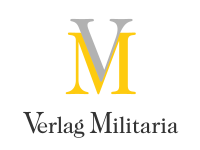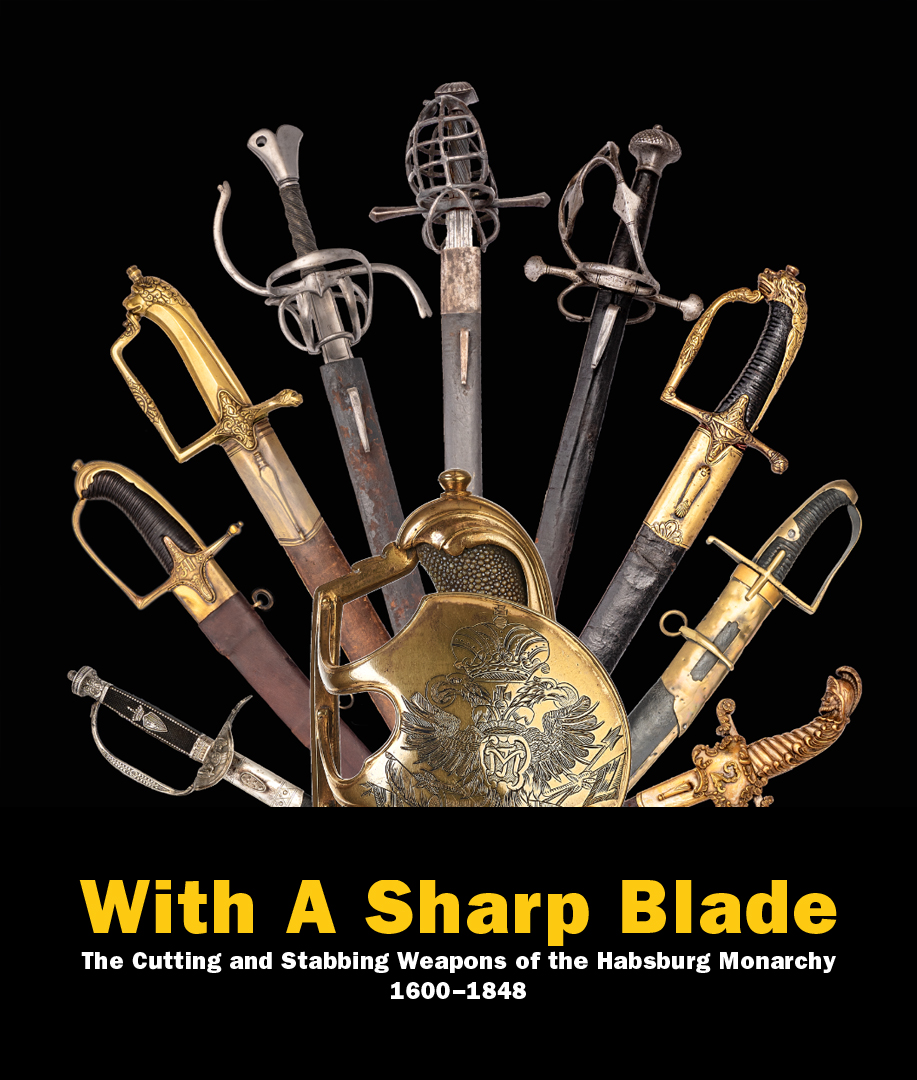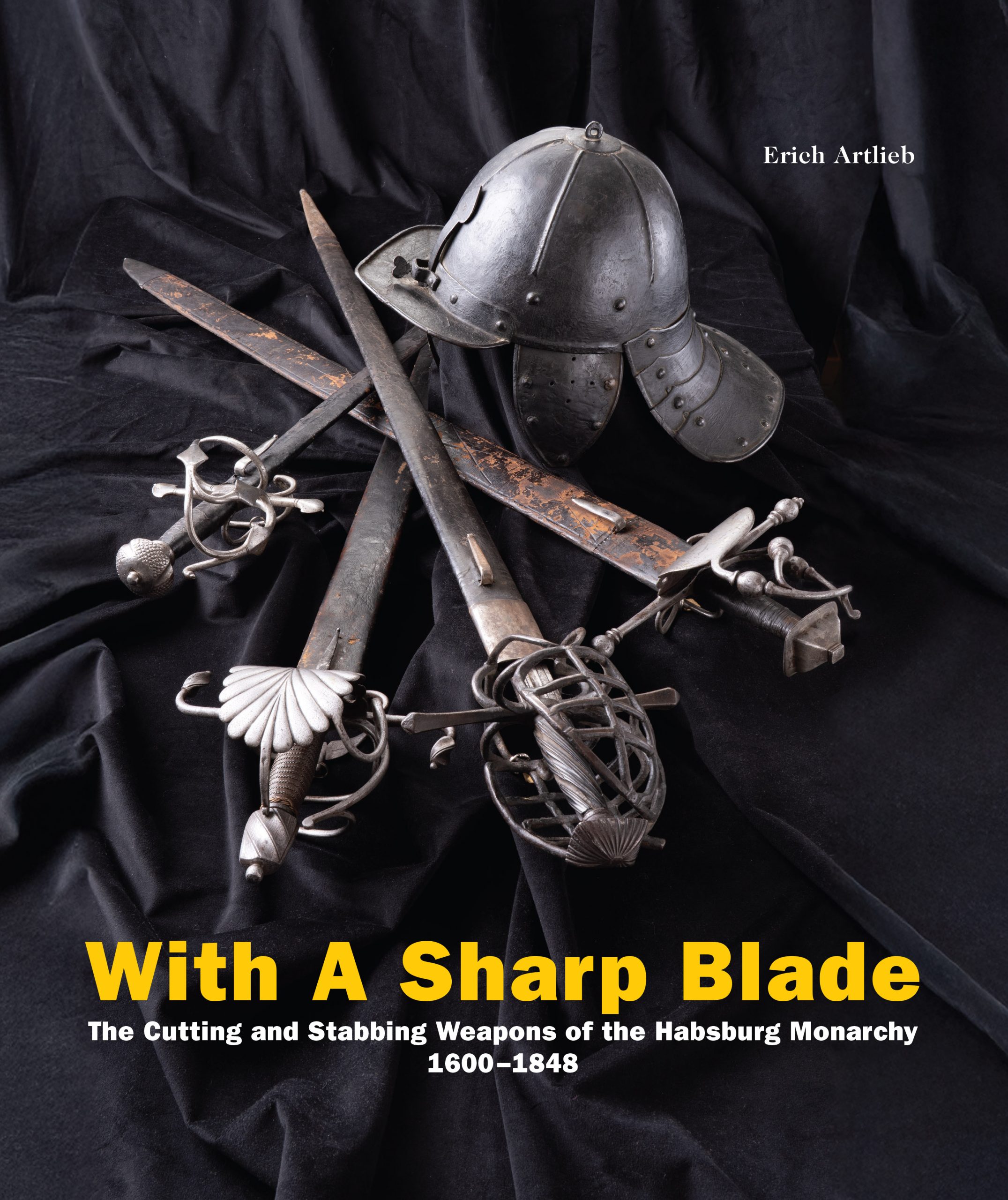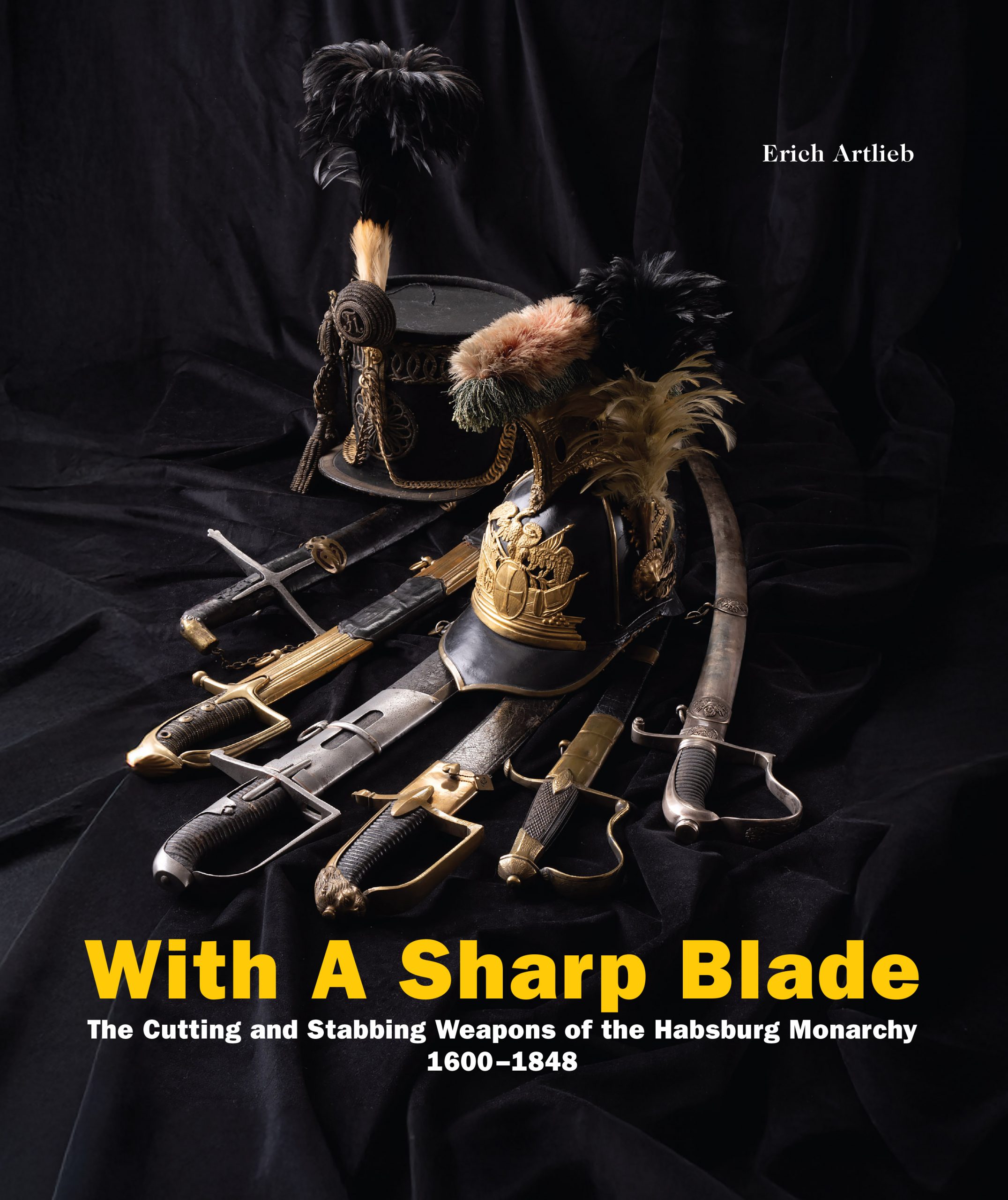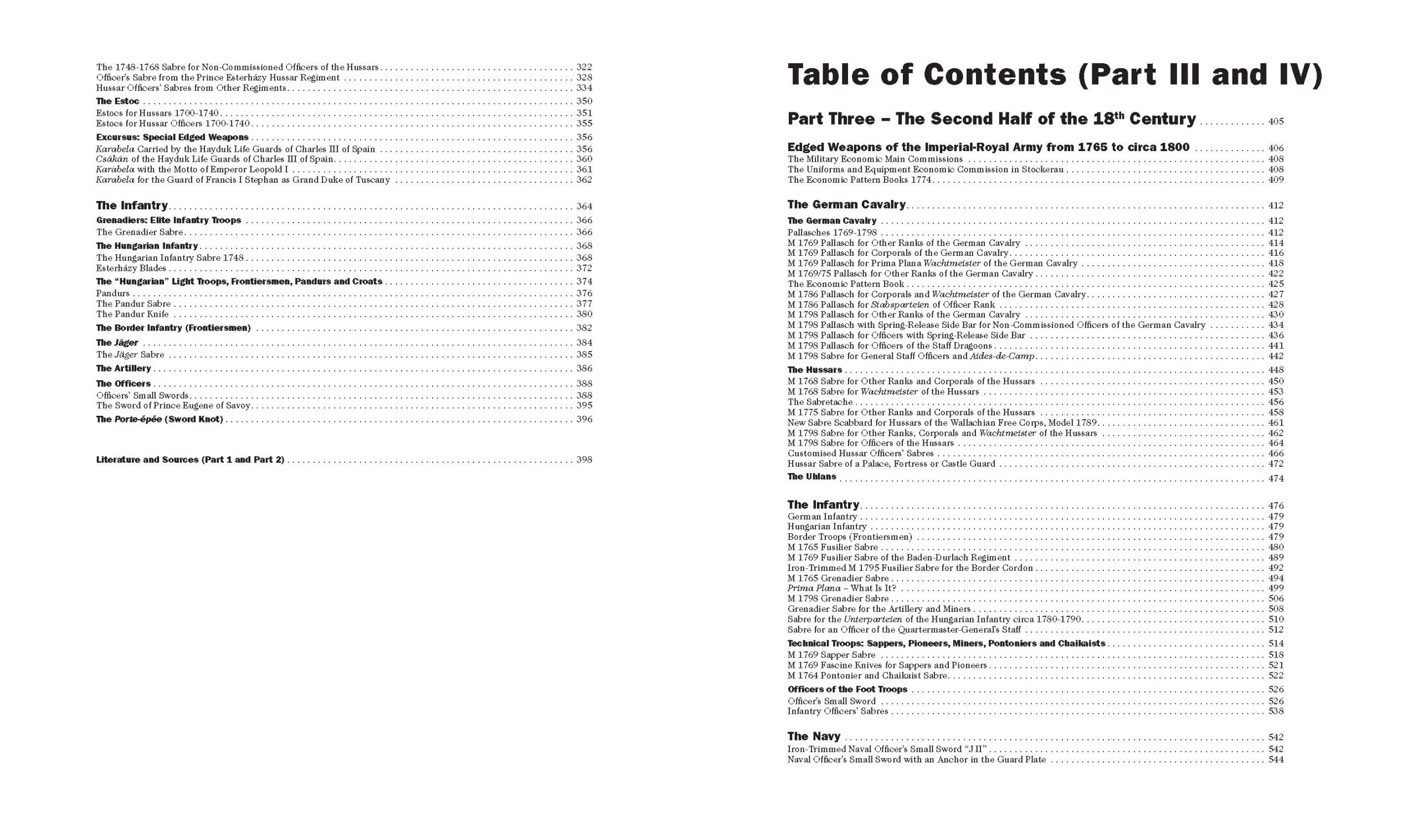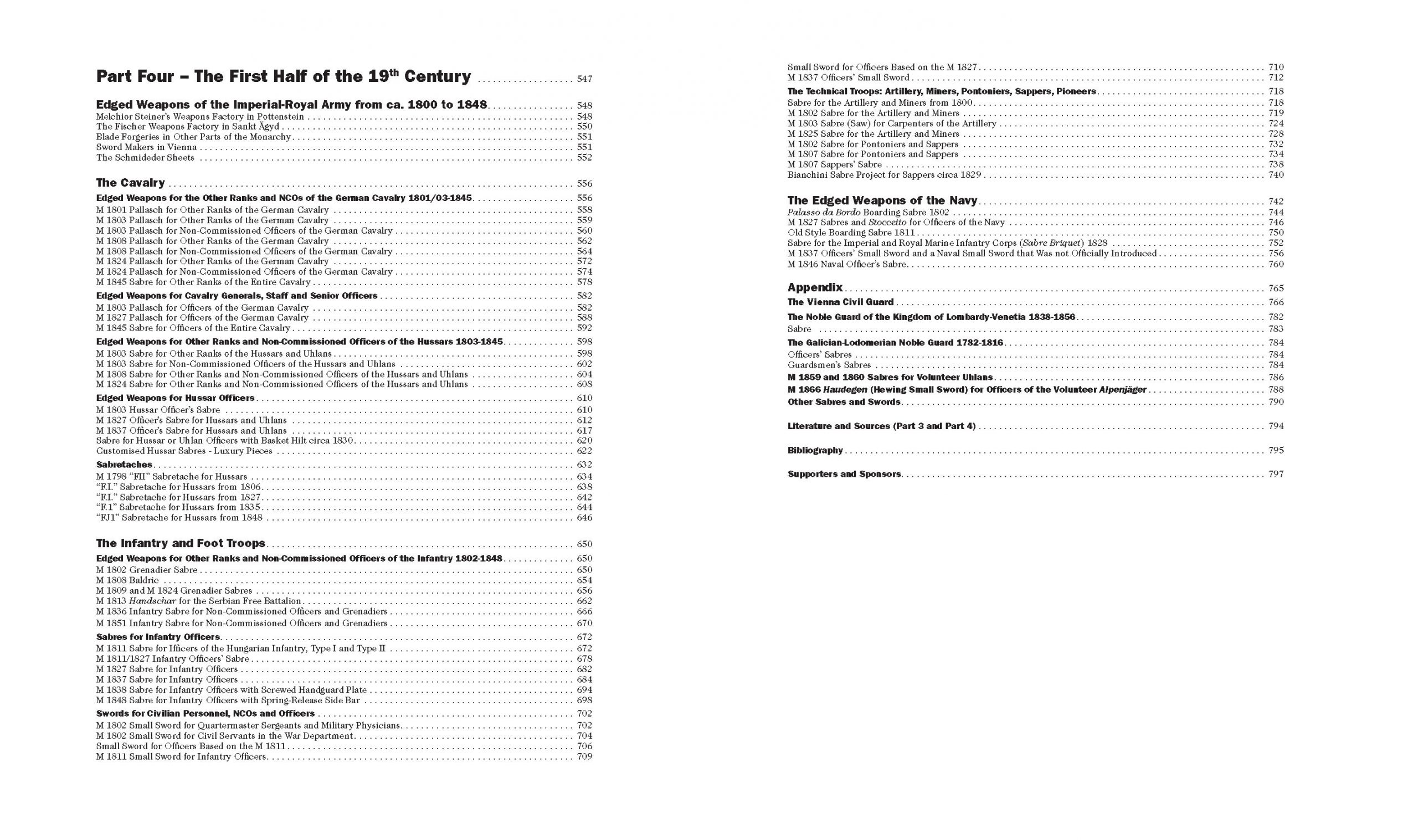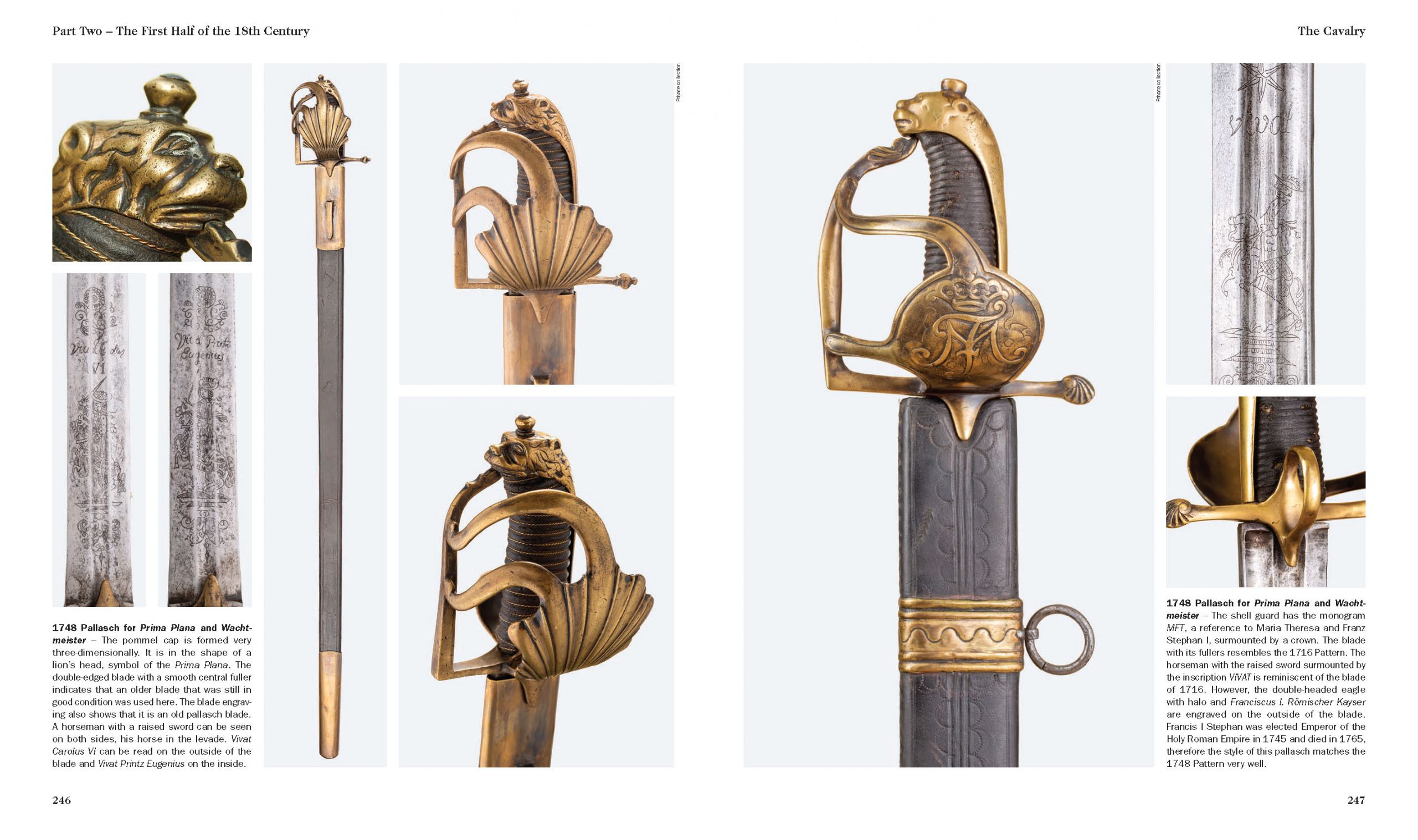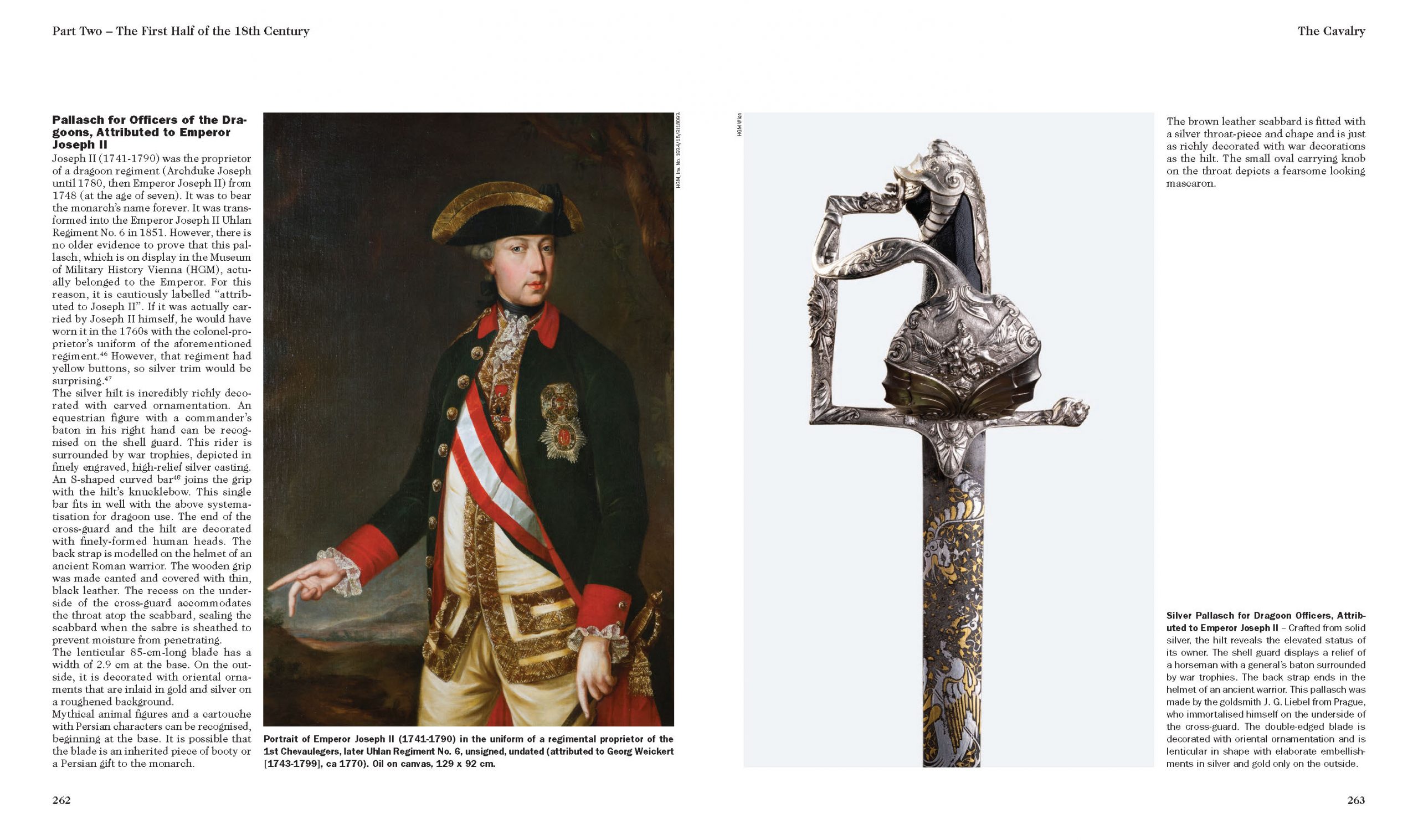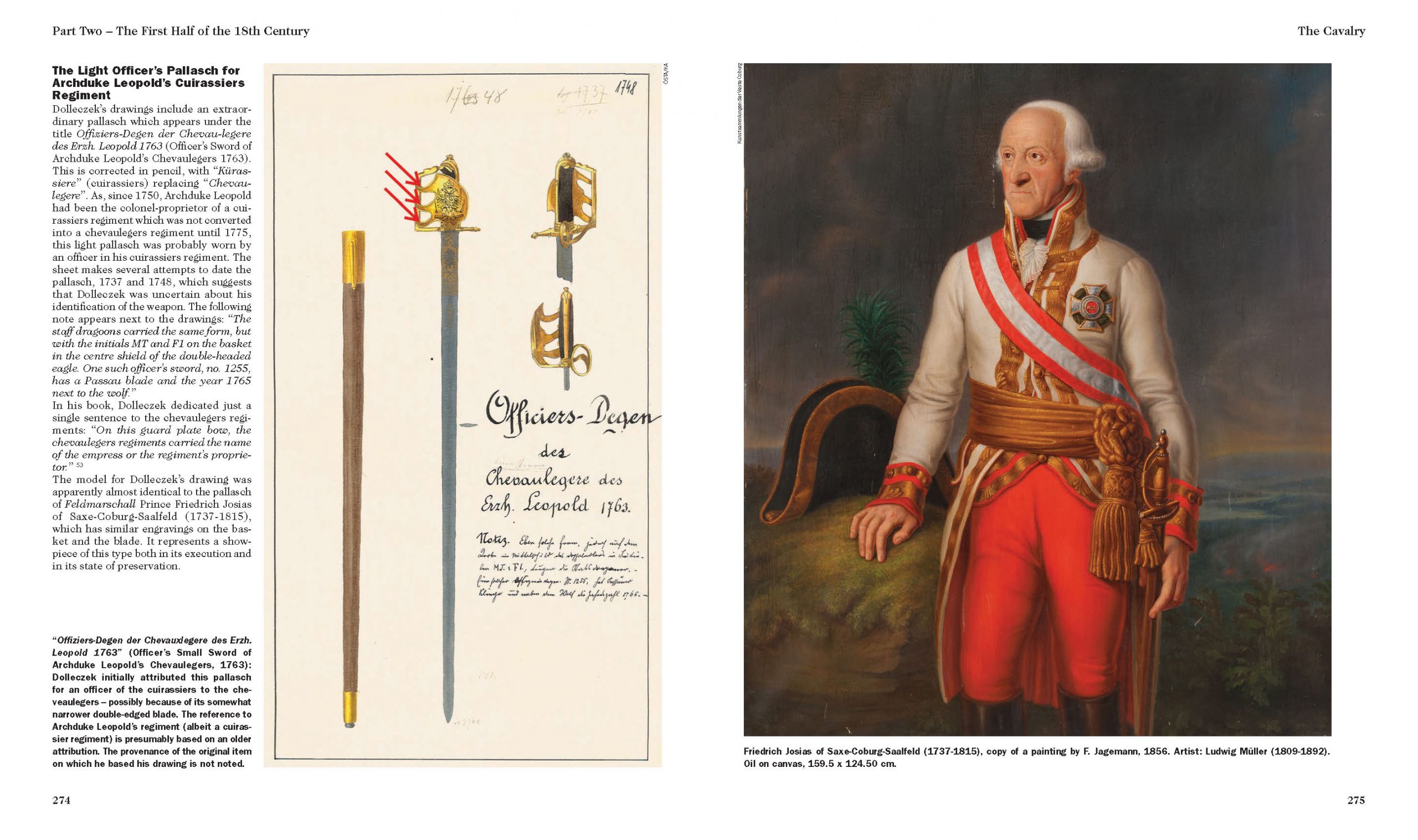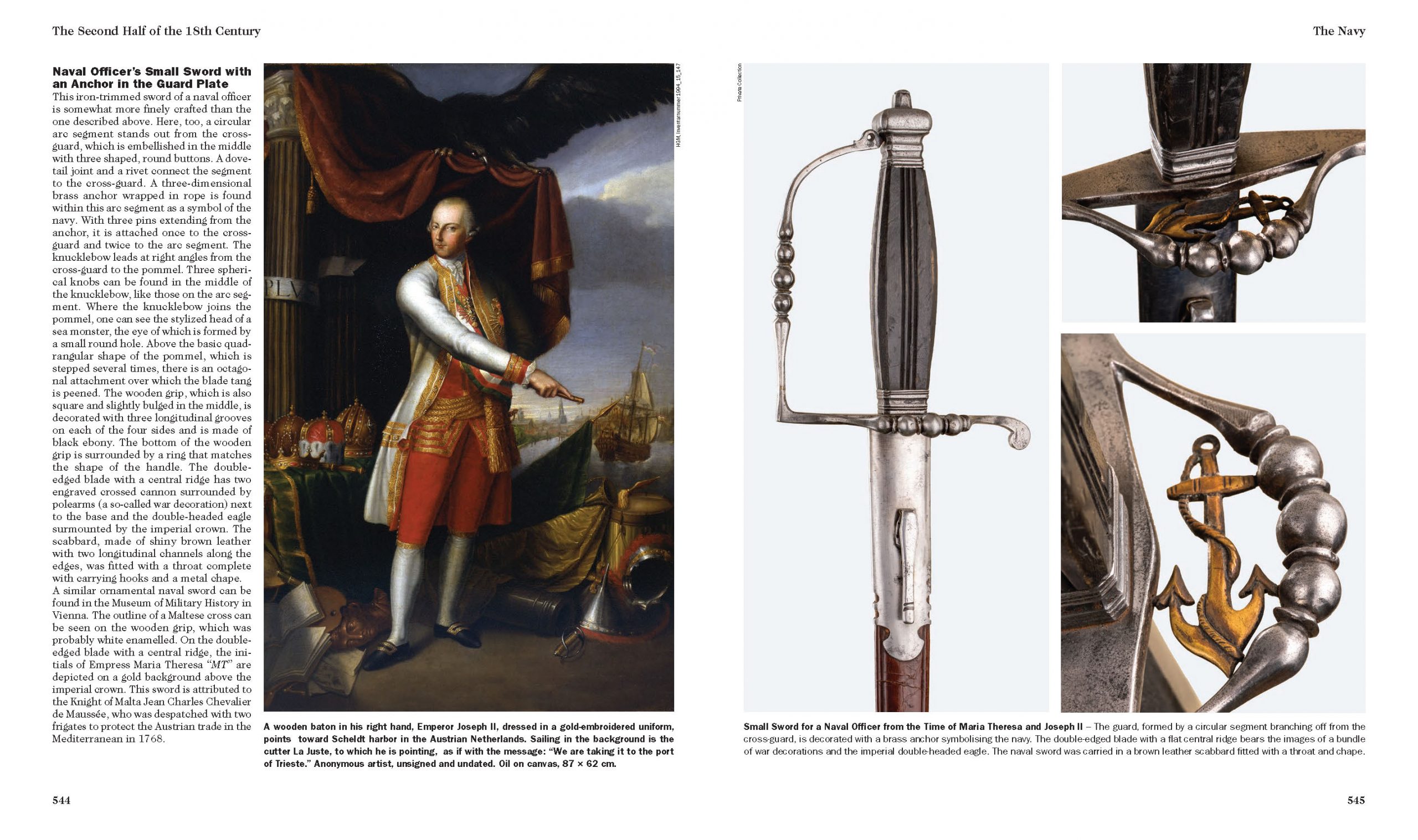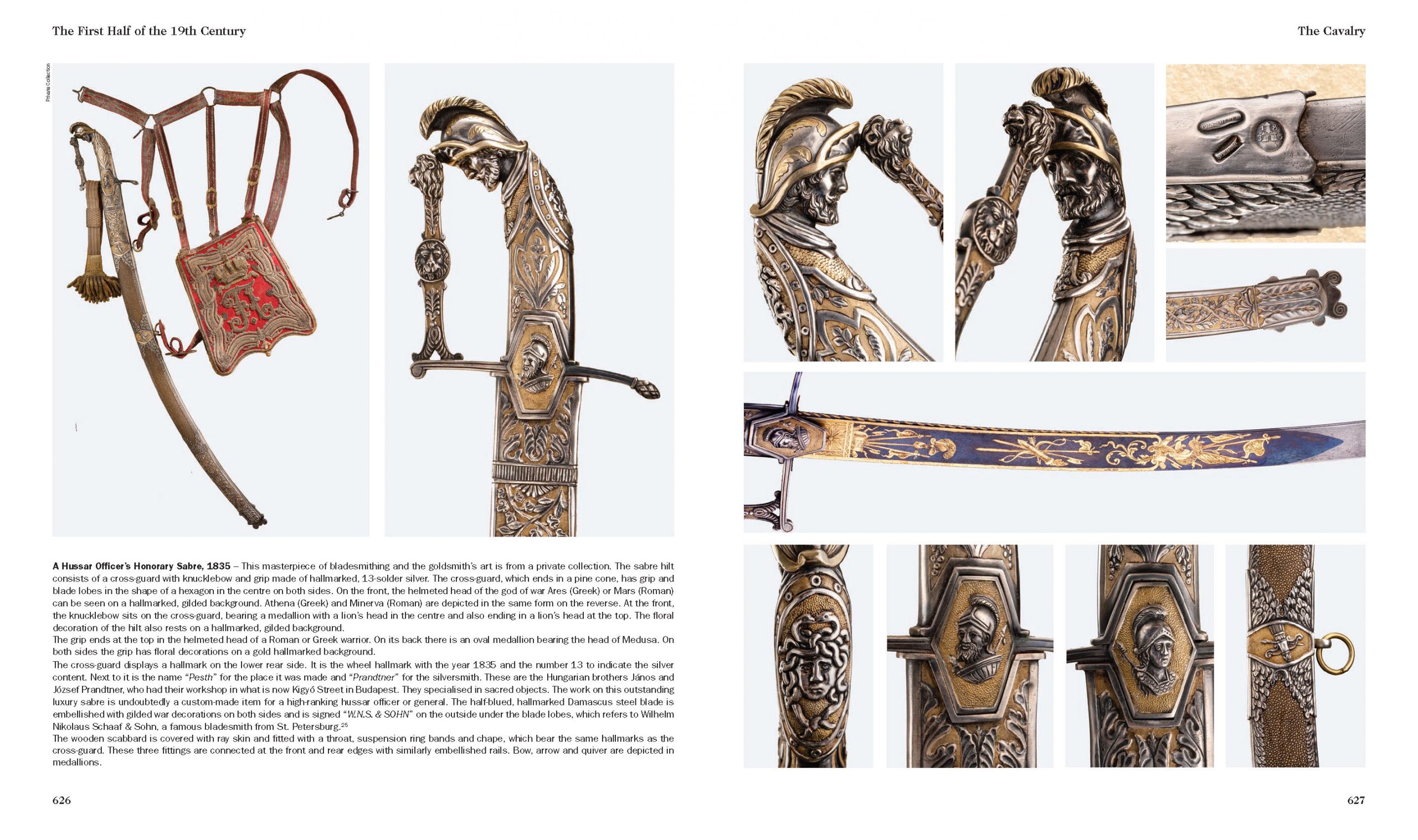With A Sharp Blade
The Cutting and Stabbing Weapons of the Habsburg Monarchy 1600–1848
Two-volume colour book with slipcase, 800 pages in total, a wealth of photos, graphics, paintings and illustrations, large format: 29.5 x 26 cm
€179,90
Content:
This large-scale, lavishly-designed two-volume colour publication is the first scientifically based, in-depth description of the swords, pallasches, sabres, and small swords with which the Habsburg army was armed. From the days of the hereditary lands to the Holy Roman Empire to the Austrian Empire, whose emperors were provided by the Habsburgs for a period of more than six centuries, these decisive bladed weapons developed an impressive variety of shapes, types, and regional characteristics. The imperial and royal army reflected not only the military necessity, but also the cultural and representative significance of edged weapons. They were at once weapons, rank insignia, and symbols of the soldiers‘ self-image.
The first volume covers the period from the beginning of the 17th century, the end of the Thirty Years‘ War, the beginning of standing armies from around 1650, to the end of the Seven Years‘ War in the middle of the 18th century. This chapter of military history was marked by profound changes in organisation, tactics, and weaponry. Around 850 high-resolution photographs of pieces in public and private collections vividly document the development of edged weapons during this era. The photos are supplemented by scientifically precise essays, detailed object descriptions, and context-related analyses, creating a multifaceted overall picture.
Part One of this volume is based on the unique holdings of the Styrian Armoury in Graz, which is still considered one of the largest and most important preserved testimonies to early modern weapons culture. Part Two draws on previously overlooked material from the Vienna War Archives: Namely the hand-drawn archive of artillery captain Anton Dolleczek. He was not only an employee of the newly opened Army Museum, but also a lecturer at the Artillery Cadet School in Vienna. Published in 1896, his “Monograph of Austro-Hungarian Bladed Weapons and Handguns”, remains a fundamental standard work to this day. His early attempt to systematize the cutting and stabbing weapons of the first half of the 18th century—long before binding adjustment regulations were issued—is revisited in this volume, critically examined, and placed in a broader historical context.
The second volume covers the period from the mid-18th century to the reign of Emperor Franz Joseph I. Particular emphasis is placed on the first comprehensive and systematic analysis of the so-called Economic Pattern Books. These documents, preserved in six handwritten volumes and supplemented by extremely precise drawings by contemporary artists, are a key source for research into the army reforms initiated by Emperor Joseph II and Field Marshal Lacy. They provide detailed information on edged weapons, uniforms and equipment and are therefore an invaluable source. Part Three of this work was compiled based on this unique compendium, carefully explained and vividly documented with first-class images of pieces in public and private collections. The presentation is supplemented by contemporary graphics, paintings, and illustrations from the second half of the 18th century, which give the reader an impressive picture of the material culture and military reality of this period of upheaval. Part Four is based on another outstanding source: The so-called Schmideder sheets preserved in the Museum of Military History in Vienna. Created as a direct successor to the Economic Pattern Books, they comprise around 1,200 finely executed lithographs, some of which are artfully hand-coloured. This collection allows for an almost complete tracing of the development of edged weapons, right up to the first illustrated regulations covering uniforms and equipment.
Together, the two-volume standard work “With A Sharp Blade” and the earlier title “With Drawn Sword” from the same publisher, co-authored by Erich Artlieb, cover the entire period of the standing army of the Habsburg Monarchy. This new work offers a unique combination of opulent visual documentation and scientific analysis, making it an indispensable reference work for museums, auction houses, and the art and the antiques trade.
